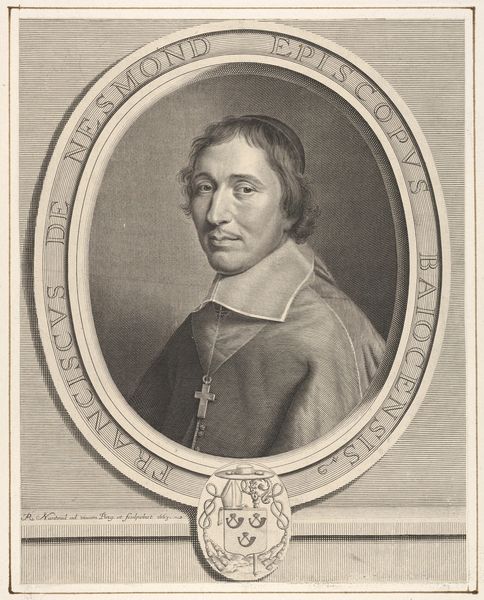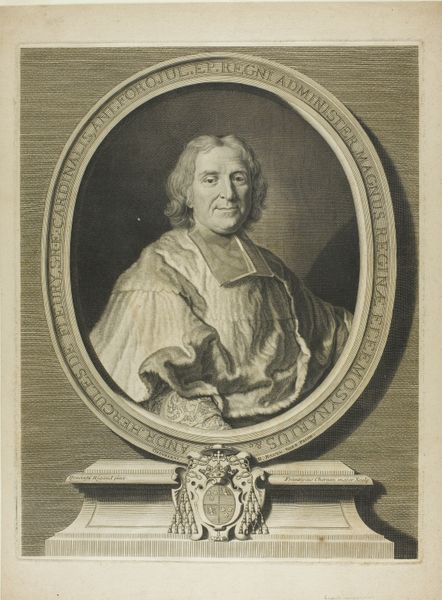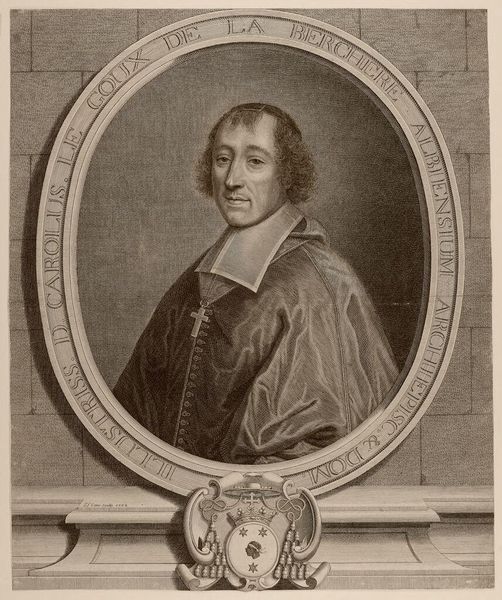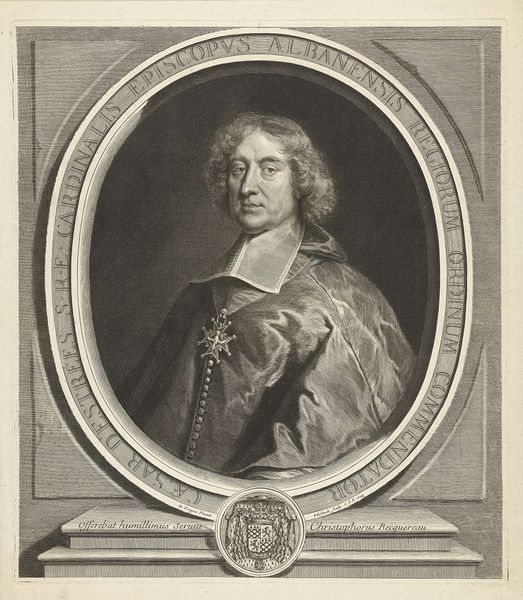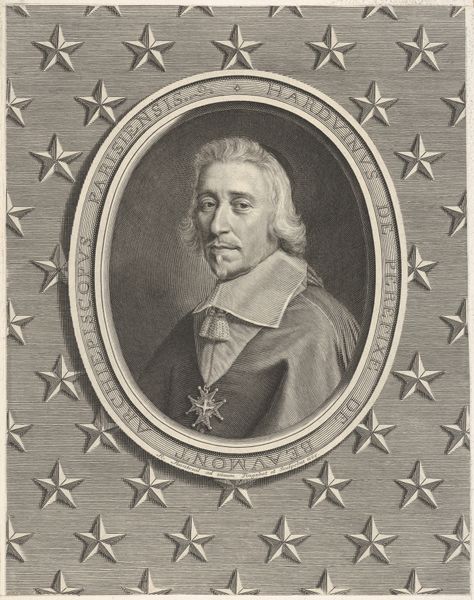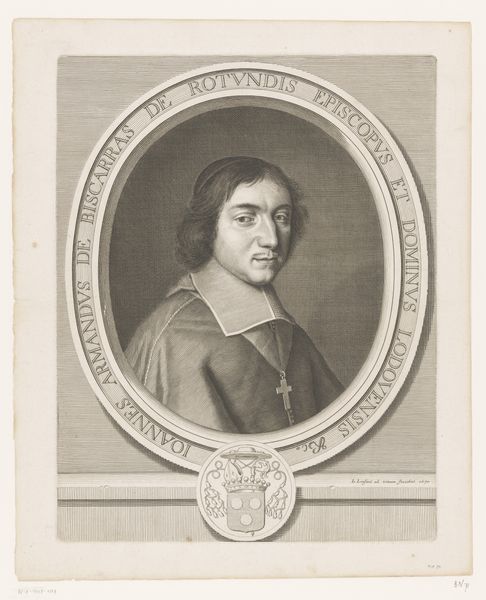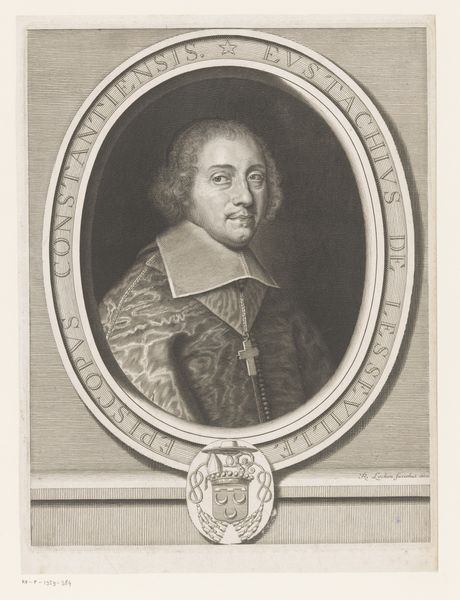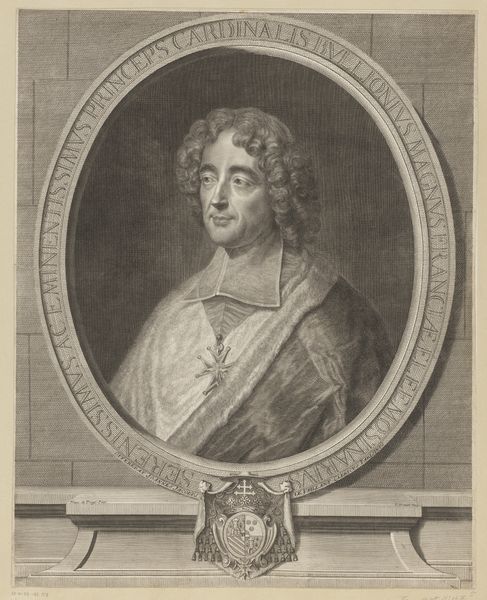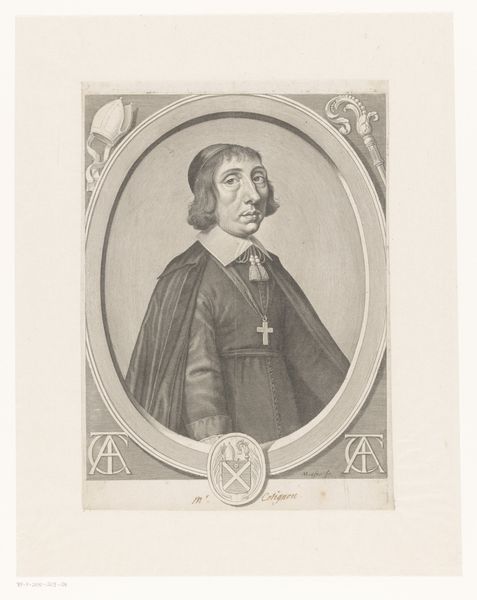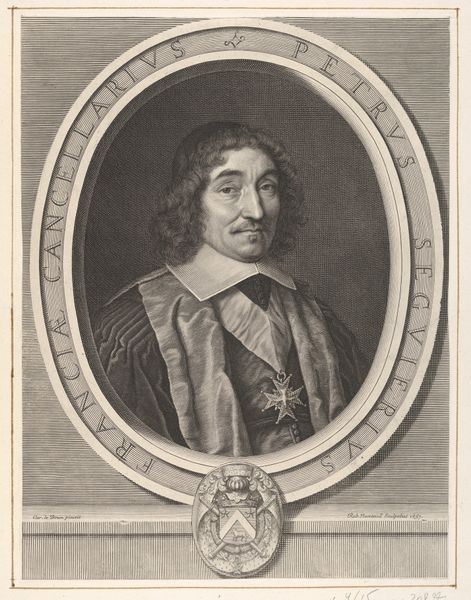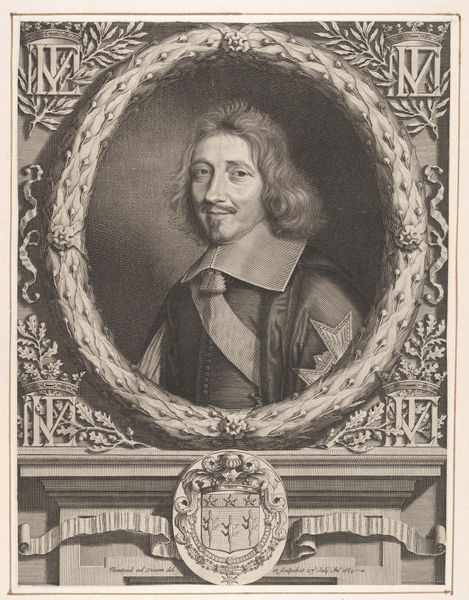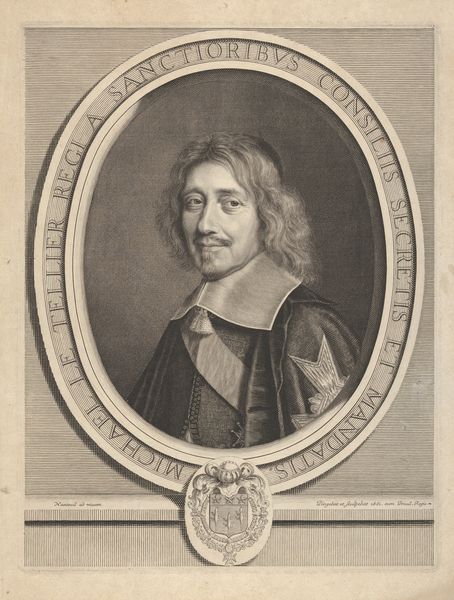
engraving
#
portrait
#
baroque
#
old engraving style
#
classical-realism
#
historical photography
#
history-painting
#
academic-art
#
engraving
Dimensions: height 352 mm, width 271 mm
Copyright: Rijks Museum: Open Domain
Curator: This is Pierre Landry’s 1666 engraving, "Portret van Guillaume Le Boux". The tonality suggests a somber but refined study in character. Editor: There's a pervasive austerity in this engraving. Observe the sitter, encased within that rigid oval frame atop that heraldic plinth. It almost feels like we’re viewing a reliquary or some kind of important, preserved effigy. Curator: The oval's geometric constraint serves as a perfect foil to the softer curves of Le Boux’s face and clerical garments. And look how Landry uses only subtle variations in line density to convey volume and depth; the image achieves remarkable three-dimensionality within its medium. Editor: And observe how even his clothing signifies meaning: the clerical collar, the simple cross hanging from his neck, each telling us about his place within a spiritual hierarchy and suggesting stories of faith and obedience. That oval, even the latin text bordering his likeness, is speaking to the important status, power and lasting impact of Le Boux. Curator: Landry has expertly exploited the linear nature of the engraving process. The hatching creates this tonal complexity without any continuous shading. Note, too, how Landry directs the lines to emphasize the architecture of Le Boux’s face. Editor: That stern expression too speaks of sacrifice, discipline, perhaps even an air of practiced self-denial fitting of a high clergyman. Do you notice any symbols, I wonder, that tie him to a specific dogma or historical faction? Curator: It’s the way the geometric framework contains, yet somehow accentuates, the organic contours that interests me. Look at how Landry resolves that tension so effectively, such masterful economy! Editor: Ultimately, engravings like this served to communicate power and lineage in early modern Europe. Seeing it reminds me of the continuity between religious iconography, classical portraiture, and aristocratic symbolism—a visual language for enduring influence. Curator: It is a fascinating look at how a limited set of materials and formal concerns creates an entirely successful study of, yes, and intriguing look at this Bishop. Editor: Precisely. We are reminded how much symbolic weight a single image, carefully composed, can truly bear.
Comments
No comments
Be the first to comment and join the conversation on the ultimate creative platform.
